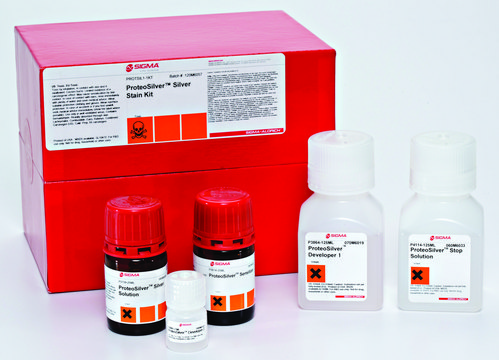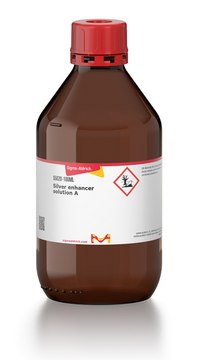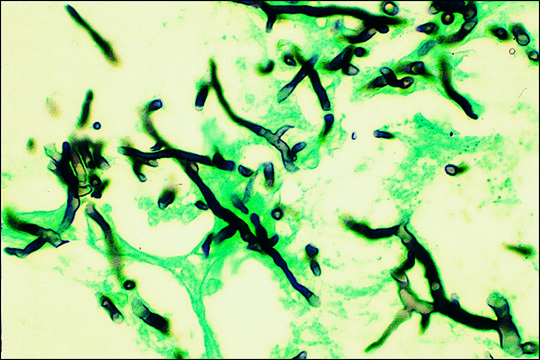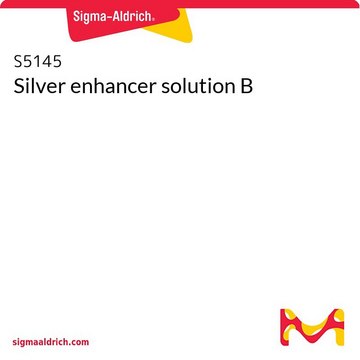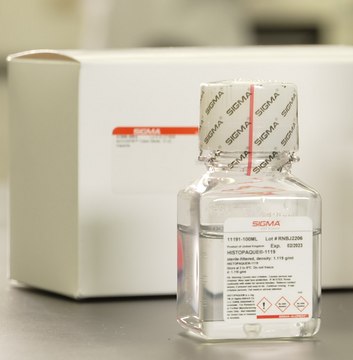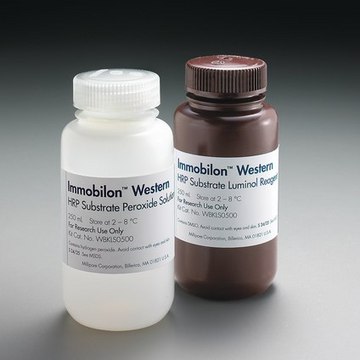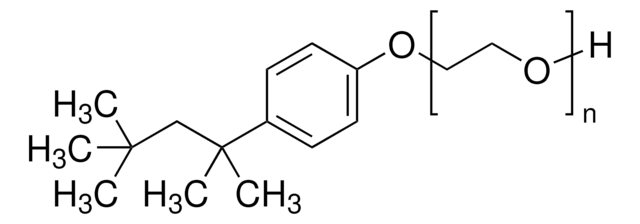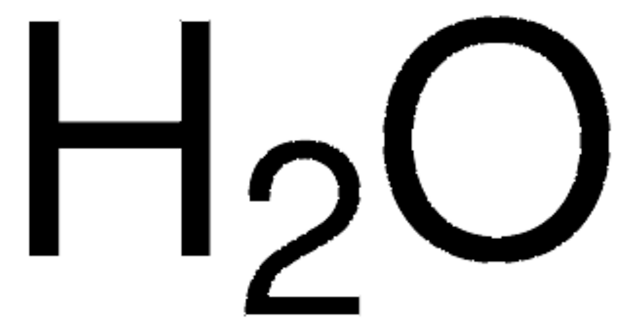Recommended Products
form
liquid
Quality Level
usage
sufficient for ≥100 slides staining and fixing
application(s)
diagnostic assay manufacturing
hematology
histology
storage temp.
2-8°C
Application
Silver Enhancer Kit has been used to determine the presence of gold nanorods in various tissues and to prepare silver enhanced gold colloids for electron microscopy.
Features and Benefits
Colloidal gold labels are normally visible only at the electron microscope level. Silver Enhancer enlarges the gold colloid label by precipitation of metallic silver to give a high contrast signal visible under a light microscope. A darkroom is not necessary for this procedure, as the silver enhancer working solution is light-stable for 20-30 minutes under ordinary laboratory lighting.
Packaging
The Silver Enhancer kit consists of Solution A (silver salt), Solution B (initiator), Sodium Thiosulfate (fixer), and a Technical Bulletin describing their use.
Principle
Solution A and Solution B are mixed 1:1 immediately before use and applied to the slide holding the gold-labeled section. After 5-10 minutes, the slide is rinsed with distilled water, fixed for 2-3 minutes in a sodium thiosulfate solution, and rinsed again. The section is now ready for counterstaining and mounting as required.
Kit Components Only
Product No.
Description
- Sodium thiosulfate pentahydrate, reagent grade, ≥99.5% 500 g
Signal Word
Danger
Hazard Statements
Precautionary Statements
Hazard Classifications
Aquatic Acute 1 - Aquatic Chronic 1 - Repr. 1B
Storage Class Code
6.1C - Combustible acute toxic Cat.3 / toxic compounds or compounds which causing chronic effects
Flash Point(F)
Not applicable
Flash Point(C)
Not applicable
Choose from one of the most recent versions:
Already Own This Product?
Find documentation for the products that you have recently purchased in the Document Library.
Yuan Chen et al.
Oncotarget, 9(41), 26556-26571 (2018-06-15)
Tumor hypoxia is a well-recognized driver of resistance to traditional cancer therapies such as chemotherapy and radiation therapy. We describe development of a new nanoconstruct composed of gold nanorods (GNRs) conjugated to carbonic anhydrase IX (CAIX) antibody that specifically binds
Joanna Seiffert et al.
Respiratory research, 17(1), 85-85 (2016-07-21)
The increasing use of silver nanoparticles (AgNPs) in consumer products is concerning. We examined the potential toxic effects when inhaled in Brown-Norway (BN) rats with a pre-inflammatory state compared to Sprague-Dawley (SD) rats. We determined the effect of AgNPs generated
F Liu et al.
The Plant cell, 13(5), 1063-1078 (2001-05-08)
Some plant cytoplasms express novel mitochondrial genes that cause male sterility. Nuclear genes that disrupt the accumulation of the corresponding mitochondrial gene products can restore fertility to such plants. The Texas (T) cytoplasm mitochondrial genome of maize expresses a novel
Catarina Coutinho et al.
Analytical and bioanalytical chemistry, 411(9), 1807-1824 (2018-11-06)
MicroRNAs (miRNAs) are small regulatory RNAs, the dysregulation of which has been associated with the progression of several human diseases, including cancer. Interestingly, these molecules can be used as biomarkers for early disease diagnosis and can be found in a
Tsung-Ting Tsai et al.
Scientific reports, 7(1), 3155-3155 (2017-06-11)
In this study, we investigated the antibacterial activity of silver-coated gold nanoparticles (Au-Ag NPs) immobilized on cellulose paper. Ag NPs are known to have strong antibacterial properties, while Au NPs are biocompatible and relatively simple to prepare. We made the
Our team of scientists has experience in all areas of research including Life Science, Material Science, Chemical Synthesis, Chromatography, Analytical and many others.
Contact Technical Service